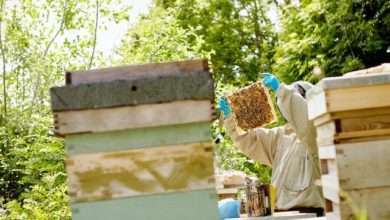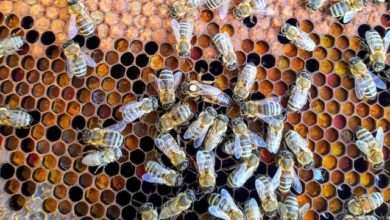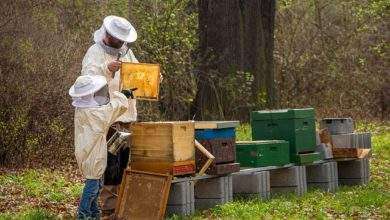Urban Beekeeping
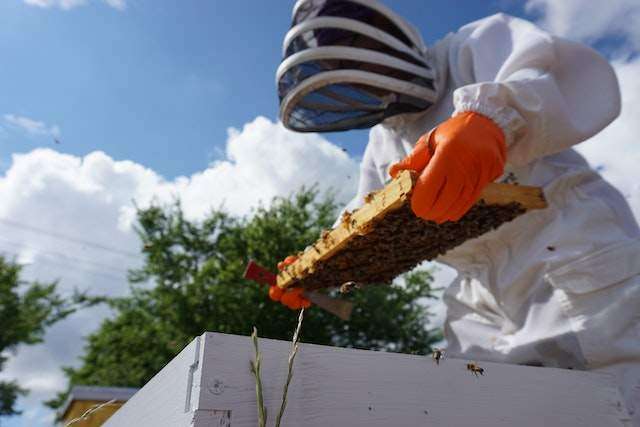
The practice of urban beekeeping has been on the rise in many parts of the world in the past couple of years due to concerns about the decreasing number of honeybees, its connection to the locally sourced food movement, and of course above all else, it is honey! But what is urban beekeeping really? Is it simply the practice of keeping bees in an urban environment?
There are shades of gray that arise on what satisfies the actual definition of an urban environment and thus the associated definition of urban beekeeping which can often vary from individual to individual. However, simply put…
Urban beekeeping is the practice of keeping bees within the confines of a city or a town and thus without access to a large yard or the countryside. And, while a lot of criticisms and constraints come with beekeeping, especially in an urban setting, research and testimonials have proven that urban beekeeping can be successful and perfectly accommodating.
Backyard Beekeeping
Backyard beekeeping is not a totally new concept but a return to old practices by our ancestors. Not long ago, maybe a few generations past, our grandfathers and forefathers were majorly homesteaders and thus managed to keep bees on their vast lands for many reasons.
Years later, we are faced with nearly similar motivations towards beekeeping, however, it is only fair to conclude that living arrangements and generally the landscape has changed due to population growth and development prompting the need for backyard beekeeping. This however often requires forethought, planning, and cautious execution of the plans by taking massive precautionary measures to prevent any negative implications.
Covered in this article are thus some tips and significant points to consider before venturing into urban beekeeping.
Major Challenges to Urban Beekeeping
You often hear many individuals planning to venture into beekeeping claiming they don’t have ample space, complain about being in an urban setting, or of all the regulations associated. As such, getting started on an urban beekeeping venture often comes with a number of challenges that must first be addressed for successful beekeeping.
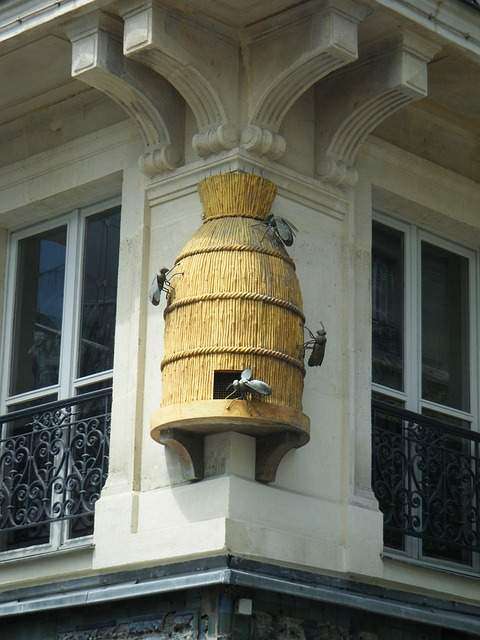
These challenges include;
Location
This is the most obvious and common challenge given that the traditional and idyllic view of beekeeping usually involves a beehive in the middle of a field or a vast forest. Furthermore, a beehive in a backyard setting is usually surrounded by beautiful and colorful flowers, a nary man-made object, and of course the hive.
This seems all simple and even romantic, however, it is a reality that most beekeepers struggle with. For instance, most usually have constraints leveling from available space, potential effects on neighbors, and foraging options for the bees among others.
Many of these constraints are usually insignificant for the countryside beekeepers if they exist at all, and are also easy to address unlike in the case of urban beekeepers who have little to no space in some residential areas. For instance, some individuals often have tiny yards or even completely no backyard in places they live in the city. If you are among these individuals, do not panic since only a little creativity is needed to find ample beekeeping space in the city. Commonly utilized areas include apartment rooftops or in extreme cases, a concrete jungle if the space is abandoned among others. As a matter of fact, urban beekeeping is continually growing popular and as such, less-than-obvious locations utilized are popping up within the cities.
Access to Flowers

This is another commonly expressed concern among potential urban beekeepers. If you have lived in an urban setting then you know the concerning ratio of concrete to natural vegetation which is quite high implying an immense scarcity of nectar and pollen floral resources within the neighborhood.
However, you would be surprised at what the bees can achieve and some simple steps you can individually take to remedy this challenge. For instance, bees often have an amazing capacity to discover and exploit floral resources within a wide radius of up to 5 miles within their hive location. This is a vast area that will not lack in the bees’ needed resources despite the magnitude of development or population.
Subsequently, you could also plant flowers strategically to bloom throughout the year within the available space you have to supplement the extreme resourcefulness of the bees. As such this should not be a great worry as it is easy to resolve.
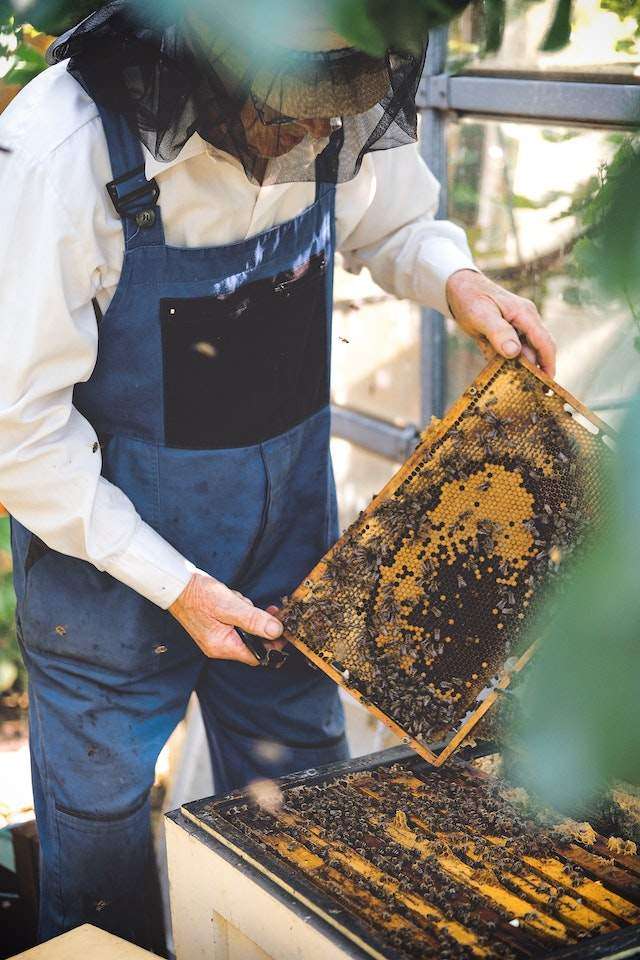
Neighbors
An urban setting is usually densely populated to a degree that living situations warrants for a mostly shared space and among the significant accomplishments in beekeeping is ensuring that you coexist freely and happily with the neighbors.
It is imperative that you anticipate some of the negative implications associated with the bees towards the neighbors like accidental stings and a lot of bees in the neighborhood.
This warrants that you devise a contingent of preventive measures to utilize. For instance, a beekeeper should consider and map out the flight path of the bees as they come in and out of the hives. This would prevent unnecessary scares and inconveniences with the immediate neighbors.
Some beekeepers even constitute an obstacle like small bushes near hive entrances to ensure that the bees gain altitude as they come and go and thus not interfere with the neighbors. These are just some of the preventive measures utilized to curb this challenge among potential urban beekeepers.
Urban Beekeeping Laws and Regulations
Just like any other popular activity, rules and regulations are often required to maintain sanity and safety within the active areas. Nevertheless, the laws governing beekeepers have often been murky at best and vary with geographical locations like states and municipalities.
For instance, a statutory provision in the Georgian code usually prohibits county and municipality governments from interfering with beekeeping endeavors. Since this seemingly only applies to agricultural beekeeping, the counties and municipalities are usually left with beekeeping regulatory powers through zoning.
As beekeeping grows in popularity, many local governments have embarked on creating new zoning codes and provisions that specifically address urban beekeeping.
- Therefore, many municipalities often require the registration of urban beekeepers and their beehives with the local authorities. Often a simple and straightforward process to accomplish.
- Subsequently, with the exponential growth of beekeeping, many cities like New York that had previously banned the practice have overturned these laws and allowed beekeeping within their territories.
- Other cities and zones that had also not addressed the issue have now embarked on creating new guidelines and restrictions pertaining to the hobby.
- Similarly, some cities in Utah and South Carolina regions have recently exercised their regulatory mandate by upholding municipal bans on beekeeping on any land not zoned for agricultural utilization.
The Unique Things Bees Can Do
We love bees for several reasons, some of which even motivate prospective urban beekeepers towards venturing into the endeavor. For instance;
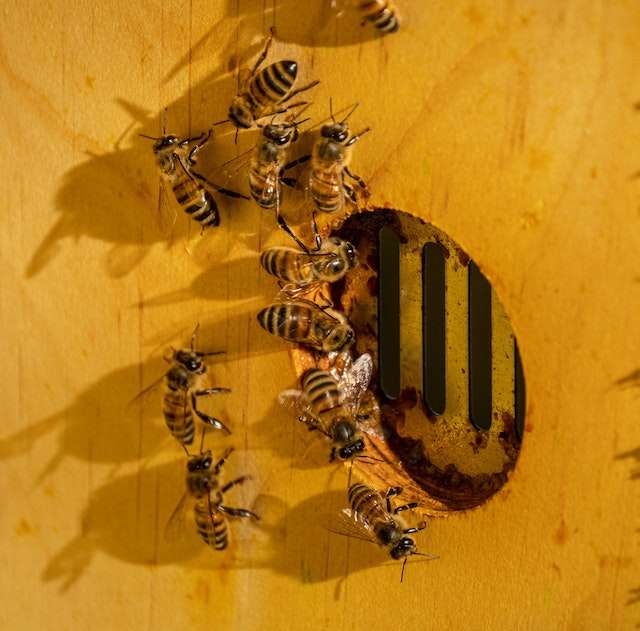
- Bees live out their own lives without much assistance required.
- They often do wonderful things like improving the environment.
- They provide one of the sweetest and most nutritious products, honey, among others.
Nevertheless, these creatures can often be unpredictable in some of their adventures resulting in unintended severe consequences.
For example, despite being great at finding good resources on their own, they can usually cause problems more so to the community if the resources are in an inconvenient location as per human deduction. Therefore, whenever they swarm a wrong place at the wrong time, negative implications usually follow sometimes even featured in the news.
These are just but some of the common behavioral patterns and associated consequences. However, these challenges are usually addressable in one way or the other as long as you decide to fully commit by setting your heart on beekeeping. Therefore, with a little research, investigation, and associating with local beekeeping clubs, you should be able to easily navigate through these challenges.
Urban Beekeeping Tips
An urban beekeeper should look at the venture/hobby from a different perspective from that of ordinary folks to facilitate easy management of the endeavor. They should, therefore;
Elevate the ‘departure’ and ‘approach’ zones with a fence
This is often a common practice for beekeepers not only in rural areas but also in urban settings. The installation of a fence or shrubbery can help accomplish many functions. For instance;
- It will ensure bees leave or enter their hives above reach from people.
- It also encourages the bees to fly way above day-to-day life, limiting human interactions and interference.
- It creates a wind barrier safeguarding the hive from impacts.
- It keeps the hive away from the gaze of neighbors, passersby, and even children.
Water Needs
Like all living things, bees also often need water, if not more to aid in their daily survival and activities. As such, if the water is unavailable or situated in an unideal location, then several problems should be expected.
You should therefore make sure, as an urban beekeeper, to provide an easy and reliable water source for your bees at all times lest they cause severe consequences by going to extremes like swarming the homestead kitchen or the neighbor’s water source among others.
Be swarm aware
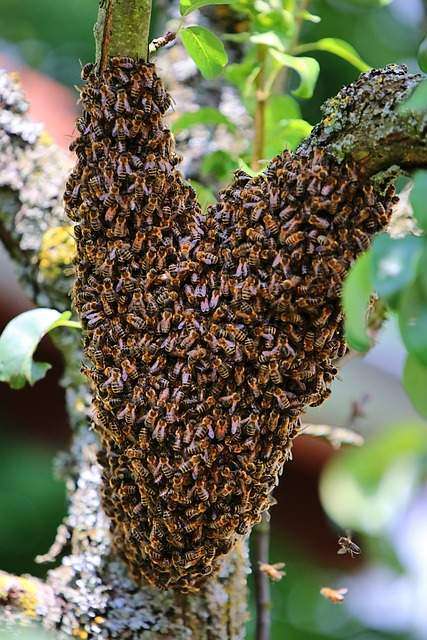
Bee swarms usually strike some of the significant public scares of all time despite comprising of full, docile, and quiet bees.
Therefore, as an urban beekeeper, you should always be vigilant and observe potential swarm activities. Supplementing this should be a series of carefully crafted preventive measures to limit the occurrence rates of bee swarms further preventing devastative consequences associated.
For instance, as an urban beekeeper, you should acquire a bait hive which when tactfully positioned, should stop the swarm altogether or limit the randomness of them landing and invading the neighbor’s backyard and home.
With all that said, it is evident that urban beekeeping is simply not for everyone and usually comes with numerous challenges that must first be addressed. This is because failure to sort these challenges at the start essentially dooms your beekeeping endeavor or essentially makes it a complex and demanding task.
Another Urban Beekeeping Option
Urban beekeeping has proven poorly feasible to many hobbyists and prospective beekeepers due to the many challenges noted in the article. Nevertheless, there is a much more straightforward option that bypasses most of these challenges while still guaranteeing you a full-fledged beekeeping endeavor. As such, you do not have to undertake many of the preventive measures, and risks, constantly providing things like water and monitoring as most of these would be catered for in the method. This entails;
Utilizing a Local Community Garden

Since many urban centers and cities usually compensate for what they lack in free space and land with concrete structures, local governments and associated authorities/beneficiaries have often taken the mandate to set aside community gardens for the benefit of individual community members and the entire community. Most of the time, those charged with managing these gardens are usually thrilled with the idea of introducing bees to their farms.
Bees assist the environment as a pollination agent. Therefore, introducing them in a garden, be it a community garden, will facilitate the pollination of the vegetables and plants within the area. This subsequently increases the chances for massive and better-quality yields than in farms with minimal to no bee access.
This was proven in the Honey Bee Project, a study conducted by the University of Hawaii on bee-associated pollination and its resulting implications. The study surmised that adding bees within a garden to the ratio of one hive to 2.5 acres of cucumber plantation resulted in triple the fruit production compared to plots with no access to bees.
Subsequently, they also deduced that at least 8 to 10 bees to flower interactions guaranteed the production of high-quality cucumber fruit. These essentially indicate the numerous benefits associated with finding and settling your bee hives within a local community garden if addressing backyard beekeeping proves detrimentally challenging.
Final Thoughts
Urban beekeeping is feasible on so many levels and as such an achievable endeavor. All you need is to conduct some preliminary studies on the matter, gather all the relevant material and consider all the precautionary measures.
This will allow you to operate with minimal to no inconveniences either from the bees or the local community. Therefore, by going through this article, you will obtain some vital information that will help you start up and run your beekeeping venture/hobby smoothly and with no issues at all.

